2020–21 UEFA Nations League
The 2020–21 UEFA Nations League is the second season of the UEFA Nations League, an international association football competition involving the men's national teams of the 55 member associations of UEFA.[1] The competition is being held from September to November 2020 (league phase), October 2021 (Nations League Finals) and March 2022 (relegation play-outs).[2]
| Tournament details | |
|---|---|
| Dates | League phase: 3 September – 18 November 2020 Nations League Finals: 6–10 October 2021 Relegation play-outs: 24–29 March 2022 |
| Teams | 55 |
| Tournament statistics | |
| Matches played | 160 |
| Goals scored | 362 (2.26 per match) |
| Attendance | 102,538 (641 per match) |
| Top scorer(s) | |
Portugal were the defending champions, having won the inaugural 2019 finals. However, they failed to qualify for the 2021 finals after finishing second in their group behind France.[3] None of the teams that had qualified for the previous UEFA Nations League Finals qualified for the 2021 event.
Format
On 24 September 2019, UEFA announced that a revised format would be used for the 2020–21 edition, the second season of the competition.[4] The 55 UEFA national teams were divided into four leagues, with Leagues A, B and C featuring 16 teams each, divided into four groups of four teams. League D featured 7 teams divided into two groups, with one containing four teams and the other containing three. The teams were allocated to leagues based on the 2018–19 UEFA Nations League overall ranking. Each team now played six matches within their group, except for one group in League D that played four, using the home-and-away round-robin format on double matchdays in September, October and November 2020. This format ensured that for almost all groups, teams in the same group played their last matches at the same time. It also increased the number of total league phase matches from 138 to 162, and minimised the number of friendly matches.[5][6]
In the top division, League A, teams compete to become the UEFA Nations League champions. The four group winners of League A qualified for the Nations League Finals, which is played in a knockout format consisting of the semi-finals, third place play-off, and final. The semi-final pairings will be determined by means of an open draw. Host country Italy was selected among the four qualified teams by the UEFA Executive Committee, with the winners of the final crowned as the Nations League champions. The video assistant referee (VAR) system will be used in the Nations League Finals.[7]
Teams also compete for promotion and relegation to a higher or lower league. In Leagues B, C and D, the group winners were promoted, while the last-placed teams of each group in Leagues A and B were relegated. As League C had four groups while League D had only two, the two League C teams that are to be relegated will be determined by play-outs in March 2022. Based on the Nations League overall ranking of the fourth-placed teams, the first-ranked team will face the fourth-ranked team, and the second-ranked team will face the third-ranked team. Two ties will be played over two legs, with each team playing one leg at home (the higher-ranked team will host the second leg). The team that scores more goals on aggregate over the two legs will remain in League C, while the loser will be relegated to League D. If the aggregate score is level, the away goals rule is applied, with extra time played if away goals are also equal. The away goals rule is again applied after extra time, with a penalty shoot-out used to decide the winner if no goals are scored during extra time.[2]
Tiebreakers for group ranking
If two or more teams in the same group were equal on points on completion of the league phase, the following tie-breaking criteria were applied:[2]
- Higher number of points obtained in the matches played among the teams in question;
- Superior goal difference in matches played among the teams in question;
- Higher number of goals scored in the matches played among the teams in question;
- Higher number of goals scored away from home in the matches played among the teams in question;
- If, after having applied criteria 1 to 4, teams still had an equal ranking, criteria 1 to 4 were reapplied exclusively to the matches between the teams in question to determine their final rankings.[lower-alpha 1] If this procedure did not lead to a decision, criteria 6 to 10 applied;
- Superior goal difference in all group matches;
- Higher number of goals scored in all group matches;
- Higher number of away goals scored in all group matches;
- Higher number of wins in all group matches;
- Higher number of away wins in all group matches;
- Lower disciplinary points total in all group matches (1 point for a single yellow card, 3 points for a red card as a consequence of two yellow cards, 3 points for a direct red card, 4 points for a yellow card followed by a direct red card).
- Position in the 2020–21 UEFA Nations League access list.
Notes
- When there were two or more teams tied in points, criteria 1 to 4 were applied. After these criteria were applied, they may have defined the position of some of the teams involved, but not all of them. For example, if there was a three-way tie on points, the application of the first four criteria may only have broken the tie for one of the teams, leaving the other two teams still tied. In this case, the tiebreaking procedure was resumed, from the beginning, for those teams that were still tied.
Criteria for league ranking
Individual league rankings were established according to the following criteria:[2]
- Position in the group;
- Higher number of points;
- Superior goal difference;
- Higher number of goals scored;
- Higher number of goals scored away from home;
- Higher number of wins;
- Higher number of wins away from home;
- Lower disciplinary points total (1 point for a single yellow card, 3 points for a red card as a consequence of two yellow cards, 3 points for a direct red card, 4 points for a yellow card followed by a direct red card).
- Position in the 2020–21 UEFA Nations League access list.
In order to rank teams in League D, which was composed of different sized groups, the results against the fourth-placed team in Group D1 were not taken into account for the purposes of comparing teams placed first, second and third in their respective groups.[2]
The ranking of the top four teams in League A will be determined by their finish in the Nations League Finals (first to fourth).[2]
Criteria for overall ranking
The overall UEFA Nations League rankings were established as follows:[2]
- The 16 League A teams were ranked 1st to 16th according to their league rankings.
- The 16 League B teams were ranked 17th to 32nd according to their league rankings.
- The 16 League C teams were ranked 33rd to 48th according to their league rankings.
- The 7 League D teams were ranked 49th to 55th according to their league rankings.
2022 FIFA World Cup qualification
The Nations League will be partially linked with European qualification for the 2022 FIFA World Cup in Qatar, with the format confirmed by the UEFA Executive Committee during their meeting in Nyon, Switzerland on 4 December 2019.[8][9] The qualifying structure will depend on results from the Nations League, although to a lesser degree than the UEFA Euro 2020 qualifying play-offs. The ten group winners after the first round (group stage) will qualify directly for the World Cup. Then, the second round (play-offs) will be contested by the ten group runners-up, along with the best two Nations League group winners, based on the Nations League overall ranking, that finished outside the top two of their qualifying group.[10] The play-offs will be split into three play-off paths, played in two single-match knockout rounds (semi-finals and finals, with the home teams to be drawn), from which an additional three teams will also qualify.[2]
Effects of the COVID-19 pandemic
Due to the COVID-19 pandemic in Europe, the UEFA Executive Committee approved on 28 August 2020 the following principles for the league phase of the 2020–21 UEFA Nations League:[11]
- If a team could not field the minimum required number of players (at least 13 players including at least one goalkeeper) due to positive SARS-CoV-2 tests and the match could not be rescheduled, the team responsible for the match not taking place were considered to have forfeited the match and lost 0–3.
- If UEFA came to the conclusion that both or none of the teams were responsible for the match not taking place, the outcome of the match was decided by drawing of lots, either home win 1–0, home loss 0–1 or draw 0–0, carried out by the UEFA administration.
On 24 September 2020, UEFA announced that five substitutions would be permitted in Nations League matches during the October and November 2020 international windows. However, each team was only given three opportunities to make substitutions during matches, excluding substitutions made at half-time, before the start of extra time and at half-time in extra time. During the September 2020 window, only three substitutions had been permitted.[12]
All matches played in September 2020 were required by UEFA to be held behind closed doors due to the COVID-19 pandemic in Europe.[13][14] On 1 October 2020, UEFA announced the partial return of spectators to matches beginning in October 2020, restricted to a maximum of 30 percent of the respective stadium capacity. However, the return of spectators was subject to the decision of local authorities, with regional limits taking precedence over UEFA's maximum allowed capacity. Away supporters were not allowed at the venues. Social distancing was mandatory for spectators, and additional precautionary measures (such as face masks) were implemented in accordance with local regulations.[15]
Schedule
Below is the schedule of the 2020–21 UEFA Nations League.[16][2]
The Nations League Finals, originally scheduled for 2–6 June 2021, were moved to October 2021 following the rescheduling of UEFA Euro 2020 to June and July 2021 due to the COVID-19 pandemic.[17][18][12] The scheduling of the league phase was reviewed by the UEFA Executive Committee during their meeting on 17 June 2020.[19] At the meeting, UEFA decided to adjust the match schedule for October and November 2020 in order for an additional match to be played in each window.[20] This allowed for the UEFA Euro 2020 qualifying play-offs, along with the postponed March 2020 international friendlies, to be played on 7–8 October and 11–12 November 2020. Therefore, matchdays 3–6, which originally would spread over three days each during 8–13 October and 12–17 November 2020, would now spread over only two days.[21] The changes to the International Match Calendar for October and November 2020, which extended each window by one day, were approved by the FIFA Council on 25 June 2020.[22]
| Stage | Round | Dates |
|---|---|---|
| League phase | Matchday 1 | 3–5 September 2020 |
| Matchday 2 | 6–8 September 2020 | |
| Matchday 3 | 10–11 October 2020 | |
| Matchday 4 | 13–14 October 2020 | |
| Matchday 5 | 14–15 November 2020 | |
| Matchday 6 | 17–18 November 2020 | |
| Finals | Semi-finals | 6–7 October 2021 |
| Third place play-off | 10 October 2021 | |
| Final | ||
| Relegation play-outs | First leg | 24–25 March 2022 |
| Second leg | 28–29 March 2022 |
The original fixture list was confirmed by UEFA on 3 March 2020 following the draw.[23] However, due to the change of the league phase calendar, a revised schedule for the October and November 2020 fixtures was released by UEFA on 26 June 2020.[24][25]
The relegation play-outs of League C are scheduled on the same dates as the 2022 FIFA World Cup qualifying play-offs. If one or more of the teams due to participate in the relegation play-outs also qualifies for the World Cup qualifying play-offs, the relegation play-outs will be cancelled and the teams in League C ranked 47th and 48th in the Nations League overall ranking will be automatically relegated.[2]
Seeding
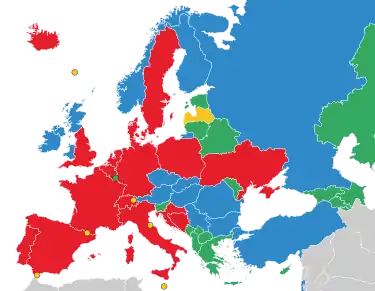
All 55 UEFA national teams entered the competition. Due to the format change of the competition, no teams were actually relegated from the 2018–19 season. In addition to the group winners, the second-placed teams in Leagues C and D, along with the best-ranked third-placed team of League D, were also promoted.[16]
In the 2020–21 access list, UEFA ranked teams based on the 2018–19 Nations League overall ranking, with a slight modification: teams that were originally relegated in the previous season were ranked immediately below teams promoted prior to the format change.[26] The seeding pots for the league phase were based on the access list ranking.[2] The seeding pots, draw procedure and fixture list procedures were confirmed by the UEFA Executive Committee during their meeting in Nyon, Switzerland on 4 December 2019.[8][27]
| Originally promoted in previous season (prior to format change) | |
| Originally relegated in previous season (spared after format change) | |
| Promoted after format change |
|
| ||||||||||||||||||||||||||||||||||||||||||||||||||||||||||||||||||||||||||||||||||||||||||||||||||||||||||||||||
|
|
The draw for the league phase took place at the Beurs van Berlage Conference Centre in Amsterdam, Netherlands on 3 March 2020, 18:00 CET.[28][29][30][31] While the draw typically had restrictions for prohibited clashes, winter venues and excessive travel, no conditions applied to the draw given the allocation of the teams to both leagues and pots.[27]
League A
Group A1
| Pos | Team | Pld | W | D | L | GF | GA | GD | Pts | Qualification or relegation | |||||
|---|---|---|---|---|---|---|---|---|---|---|---|---|---|---|---|
| 1 | 6 | 3 | 3 | 0 | 7 | 2 | +5 | 12 | Qualification to Nations League Finals | — | 1–1 | 2–0 | 1–1 | ||
| 2 | 6 | 3 | 2 | 1 | 7 | 4 | +3 | 11 | 0–1 | — | 1–0 | 3–1 | |||
| 3 | 6 | 2 | 1 | 3 | 6 | 6 | 0 | 7 | 0–0 | 1–2 | — | 3–0 | |||
| 4 | 6 | 0 | 2 | 4 | 3 | 11 | −8 | 2 | Relegation to League B | 0–2 | 0–0 | 1–2 | — |
Group A2
| Pos | Team | Pld | W | D | L | GF | GA | GD | Pts | Qualification or relegation | |||||
|---|---|---|---|---|---|---|---|---|---|---|---|---|---|---|---|
| 1 | 6 | 5 | 0 | 1 | 16 | 6 | +10 | 15 | Qualification to Nations League Finals | — | 4–2 | 2–0 | 5–1 | ||
| 2 | 6 | 3 | 1 | 2 | 8 | 7 | +1 | 10[lower-alpha 1] | 0–2 | — | 0–0 | 2–1 | |||
| 3 | 6 | 3 | 1 | 2 | 7 | 4 | +3 | 10[lower-alpha 1] | 2–1 | 0–1 | — | 4–0 | |||
| 4 | 6 | 0 | 0 | 6 | 3 | 17 | −14 | 0 | Relegation to League B | 1–2 | 0–3 | 0–1 | — |
- Head-to-head points: Denmark 4, England 1.
Group A3
| Pos | Team | Pld | W | D | L | GF | GA | GD | Pts | Qualification or relegation | |||||
|---|---|---|---|---|---|---|---|---|---|---|---|---|---|---|---|
| 1 | 6 | 5 | 1 | 0 | 12 | 5 | +7 | 16 | Qualification to Nations League Finals | — | 0–0 | 4–2 | 4–2 | ||
| 2 | 6 | 4 | 1 | 1 | 12 | 4 | +8 | 13 | 0–1 | — | 4–1 | 3–0 | |||
| 3 | 6 | 1 | 0 | 5 | 9 | 16 | −7 | 3[lower-alpha 1] | 1–2 | 2–3 | — | 2–1 | |||
| 4 | 6 | 1 | 0 | 5 | 5 | 13 | −8 | 3[lower-alpha 1] | Relegation to League B | 0–1 | 0–2 | 2–1 | — |
- Tied on head-to-head results. Overall goal difference was used as the tiebreaker.
Group A4
| Pos | Team | Pld | W | D | L | GF | GA | GD | Pts | Qualification or relegation | |||||
|---|---|---|---|---|---|---|---|---|---|---|---|---|---|---|---|
| 1 | 6 | 3 | 2 | 1 | 13 | 3 | +10 | 11 | Qualification to Nations League Finals | — | 6–0 | 1–0 | 4–0 | ||
| 2 | 6 | 2 | 3 | 1 | 10 | 13 | −3 | 9 | 1–1 | — | 3–3 | 3–1 | |||
| 3 | 6 | 1 | 3 | 2 | 9 | 8 | +1 | 6[lower-alpha 1] | 1–1 | 1–1 | — | 3–0[lower-alpha 2] | |||
| 4 | 6 | 2 | 0 | 4 | 5 | 13 | −8 | 6[lower-alpha 1] | Relegation to League B | 1–0 | 1–2 | 2–1 | — |
- Tied on head-to-head points (3). Head-to-head goal difference: Switzerland +2, Ukraine −2.
- The Switzerland v Ukraine match was awarded as a 3–0 win to Switzerland after being cancelled as Ukraine were placed in quarantine prior to the match due to positive SARS-CoV-2 tests in the team.
Nations League Finals
The host of the Nations League Finals, Italy, was selected from the four qualified teams.[32] The semi-final pairings were determined by means of an open draw on 3 December 2020, 17:30 CET, at the UEFA headquarters in Nyon, Switzerland. For scheduling purposes, the host team was allocated to semi-final 1 as the administrative home team.[33]
Bracket
| Semi-finals | Final | |||||
| 6 October – Milan | ||||||
| 10 October – Milan | ||||||
| Winners Match 1 | ||||||
| 7 October – Turin | ||||||
| Winners Match 2 | ||||||
| Third place play-off | ||||||
| 10 October – Turin | ||||||
| Losers Match 1 | ||||||
| Losers Match 2 | ||||||
Semi-finals
League B
Group B1
| Pos | Team | Pld | W | D | L | GF | GA | GD | Pts | Promotion or relegation | |||||
|---|---|---|---|---|---|---|---|---|---|---|---|---|---|---|---|
| 1 | 6 | 4 | 1 | 1 | 9 | 6 | +3 | 13 | Promotion to League A | — | 1–1 | 2–3 | 2–1 | ||
| 2 | 6 | 3 | 1 | 2 | 12 | 7 | +5 | 10 | 1–2 | — | 4–0 | 1–0 | |||
| 3 | 6 | 2 | 2 | 2 | 8 | 9 | −1 | 8 | 0–1 | 3–0[lower-alpha 1] | — | 1–1 | |||
| 4 | 6 | 0 | 2 | 4 | 4 | 11 | −7 | 2 | Relegation to League C | 0–1 | 1–5 | 1–1 | — |
- The Romania v Norway match was awarded as a 3–0 win to Romania after being cancelled as Norway could not travel to the match due to a positive SARS-CoV-2 test in the team.
Group B2
| Pos | Team | Pld | W | D | L | GF | GA | GD | Pts | Promotion or relegation | |||||
|---|---|---|---|---|---|---|---|---|---|---|---|---|---|---|---|
| 1 | 6 | 4 | 0 | 2 | 9 | 5 | +4 | 12 | Promotion to League A | — | 1–2 | 1–0 | 2–0 | ||
| 2 | 6 | 3 | 1 | 2 | 5 | 4 | +1 | 10 | 1–0 | — | 1–1 | 1–0 | |||
| 3 | 6 | 2 | 2 | 2 | 7 | 7 | 0 | 8 | 1–2 | 1–0 | — | 1–1 | |||
| 4 | 6 | 1 | 1 | 4 | 5 | 10 | −5 | 4 | Relegation to League C | 1–3 | 1–0 | 2–3 | — |
Group B3
| Pos | Team | Pld | W | D | L | GF | GA | GD | Pts | Promotion or relegation | |||||
|---|---|---|---|---|---|---|---|---|---|---|---|---|---|---|---|
| 1 | 6 | 3 | 2 | 1 | 7 | 4 | +3 | 11 | Promotion to League A | — | 2–3 | 1–1 | 2–0 | ||
| 2 | 6 | 2 | 2 | 2 | 9 | 12 | −3 | 8 | 0–0 | — | 3–1 | 1–1 | |||
| 3 | 6 | 1 | 3 | 2 | 9 | 7 | +2 | 6[lower-alpha 1] | 0–1 | 5–0 | — | 0–0 | |||
| 4 | 6 | 1 | 3 | 2 | 6 | 8 | −2 | 6[lower-alpha 1] | Relegation to League C | 0–1 | 3–2 | 2–2 | — |
- Tied on head-to-head points (2) and head-to-head goal difference (0). Head-to-head away goals: Serbia 2, Turkey 0.
League C
Group C1
| Pos | Team | Pld | W | D | L | GF | GA | GD | Pts | Promotion or qualification | |||||
|---|---|---|---|---|---|---|---|---|---|---|---|---|---|---|---|
| 1 | 6 | 4 | 1 | 1 | 10 | 2 | +8 | 13 | Promotion to League B | — | 1–2 | 2–0 | 4–0 | ||
| 2 | 6 | 3 | 1 | 2 | 7 | 5 | +2 | 10 | 0–1 | — | 0–0 | 2–0 | |||
| 3 | 6 | 1 | 3 | 2 | 2 | 4 | −2 | 6 | 0–0 | 1–2 | — | 0–0 | |||
| 4 | 6 | 1 | 1 | 4 | 2 | 10 | −8 | 4 | Qualification to relegation play-outs | 0–2 | 2–1 | 0–1 | — |
Group C2
| Pos | Team | Pld | W | D | L | GF | GA | GD | Pts | Promotion or qualification | |||||
|---|---|---|---|---|---|---|---|---|---|---|---|---|---|---|---|
| 1 | 6 | 3 | 2 | 1 | 9 | 6 | +3 | 11 | Promotion to League B | — | 1–0 | 2–2 | 2–0 | ||
| 2 | 6 | 2 | 3 | 1 | 9 | 8 | +1 | 9 | 2–1 | — | 1–1 | 2–1 | |||
| 3 | 6 | 1 | 4 | 1 | 6 | 6 | 0 | 7 | 1–2 | 1–1 | — | 0–0 | |||
| 4 | 6 | 0 | 3 | 3 | 5 | 9 | −4 | 3 | Qualification to relegation play-outs | 1–1 | 3–3 | 0–1 | — |
Group C3
| Pos | Team | Pld | W | D | L | GF | GA | GD | Pts | Promotion or qualification | |||||
|---|---|---|---|---|---|---|---|---|---|---|---|---|---|---|---|
| 1 | 6 | 4 | 2 | 0 | 8 | 1 | +7 | 14 | Promotion to League B | — | 0–0 | 2–1 | 1–0 | ||
| 2 | 6 | 3 | 3 | 0 | 6 | 1 | +5 | 12 | 0–0 | — | 0–0 | 2–0 | |||
| 3 | 6 | 1 | 2 | 3 | 4 | 6 | −2 | 5 | 0–1 | 1–2 | — | 1–0 | |||
| 4 | 6 | 0 | 1 | 5 | 1 | 11 | −10 | 1 | Qualification to relegation play-outs | 0–4 | 0–2 | 1–1 | — |
Group C4
| Pos | Team | Pld | W | D | L | GF | GA | GD | Pts | Promotion or qualification | |||||
|---|---|---|---|---|---|---|---|---|---|---|---|---|---|---|---|
| 1 | 6 | 3 | 2 | 1 | 8 | 4 | +4 | 11 | Promotion to League B | — | 3–2 | 0–1 | 3–1 | ||
| 2 | 6 | 3 | 1 | 2 | 10 | 8 | +2 | 10 | 0–2 | — | 2–0 | 2–0 | |||
| 3 | 6 | 2 | 2 | 2 | 5 | 7 | −2 | 8 | 0–0 | 2–2 | — | 0–2 | |||
| 4 | 6 | 1 | 1 | 4 | 5 | 9 | −4 | 4 | Qualification to relegation play-outs | 0–0 | 1–2 | 1–2 | — |
Relegation play-outs
| Team 1 | Agg. | Team 2 | 1st leg | 2nd leg |
|---|---|---|---|---|
| Moldova |
24–25 Mar '22 | 28–29 Mar '22 | ||
| Estonia |
24–25 Mar '22 | 28–29 Mar '22 |
League D
Goalscorers
There have been 362 goals scored in 160 matches, for an average of 2.26 goals per match (as of 18 November 2020).
6 goals
5 goals
4 goals
3 goals
2 goals
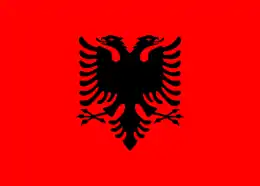 Rey Manaj
Rey Manaj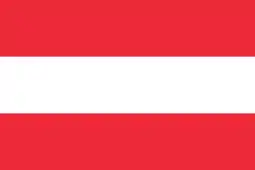 Adrian Grbić
Adrian Grbić Michael Gregoritsch
Michael Gregoritsch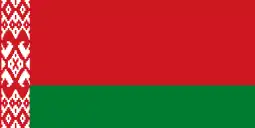 Max Ebong
Max Ebong Vitaly Lisakovich
Vitaly Lisakovich Yevgeniy Yablonskiy
Yevgeniy Yablonskiy.svg.png.webp) Michy Batshuayi
Michy Batshuayi.svg.png.webp) Youri Tielemans
Youri Tielemans Mateo Kovačić
Mateo Kovačić Nikola Vlašić
Nikola Vlašić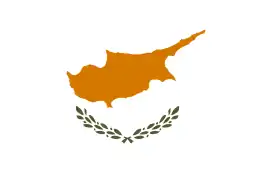 Grigoris Kastanos
Grigoris Kastanos Phil Foden
Phil Foden Mason Mount
Mason Mount Teemu Pukki
Teemu Pukki Antoine Griezmann
Antoine Griezmann Kylian Mbappé
Kylian Mbappé Nika Kacharava
Nika Kacharava Tornike Okriashvili
Tornike Okriashvili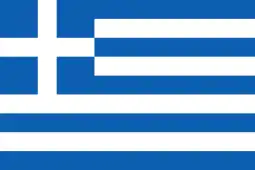 Anastasios Bakasetas
Anastasios Bakasetas Domenico Berardi
Domenico Berardi Abat Aimbetov
Abat Aimbetov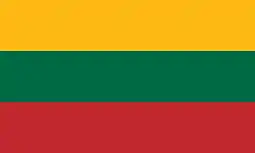 Arvydas Novikovas
Arvydas Novikovas Jurgen Degabriele
Jurgen Degabriele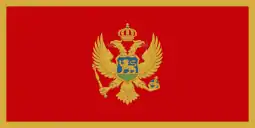 Aleksandar Boljević
Aleksandar Boljević Igor Ivanović
Igor Ivanović Memphis Depay
Memphis Depay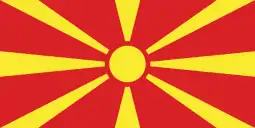 Ezgjan Alioski
Ezgjan Alioski Robert Lewandowski
Robert Lewandowski Rúben Dias
Rúben Dias João Félix
João Félix Cristiano Ronaldo
Cristiano Ronaldo Artem Dzyuba
Artem Dzyuba Anton Miranchuk
Anton Miranchuk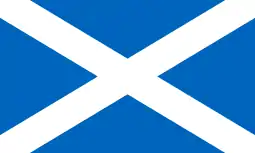 Ryan Christie
Ryan Christie Lyndon Dykes
Lyndon Dykes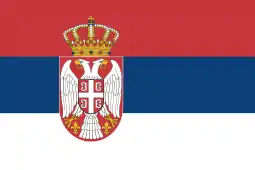 Luka Jović
Luka Jović Aleksandar Mitrović
Aleksandar Mitrović Nemanja Radonjić
Nemanja Radonjić Mikel Oyarzabal
Mikel Oyarzabal Sergio Ramos
Sergio Ramos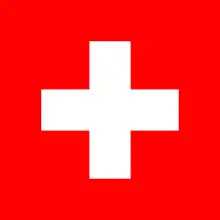 Remo Freuler
Remo Freuler Mario Gavranović
Mario Gavranović Kenan Karaman
Kenan Karaman.svg.png.webp) Kieffer Moore
Kieffer Moore
1 goal
 Keidi Bare
Keidi Bare Ardian Ismajli
Ardian Ismajli Marc Rebés
Marc Rebés Sargis Adamyan
Sargis Adamyan Tigran Barseghyan
Tigran Barseghyan Khoren Bayramyan
Khoren Bayramyan Gevorg Ghazaryan
Gevorg Ghazaryan Hovhannes Hambardzumyan
Hovhannes Hambardzumyan Kamo Hovhannisyan
Kamo Hovhannisyan Aleksandre Karapetian
Aleksandre Karapetian Henrikh Mkhitaryan
Henrikh Mkhitaryan Wbeymar
Wbeymar Christoph Baumgartner
Christoph Baumgartner Karim Onisiwo
Karim Onisiwo Marcel Sabitzer
Marcel Sabitzer Louis Schaub
Louis Schaub Alessandro Schöpf
Alessandro Schöpf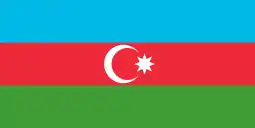 Maksim Medvedev
Maksim Medvedev Ramil Sheydayev
Ramil Sheydayev Maksim Bardachow
Maksim Bardachow Alyaksandr Sachywka
Alyaksandr Sachywka Maksim Skavysh
Maksim Skavysh Roman Yuzepchuk
Roman Yuzepchuk.svg.png.webp) Kevin De Bruyne
Kevin De Bruyne.svg.png.webp) Jason Denayer
Jason Denayer.svg.png.webp) Jérémy Doku
Jérémy Doku.svg.png.webp) Axel Witsel
Axel Witsel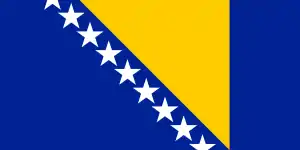 Edin Džeko
Edin Džeko Haris Hajradinović
Haris Hajradinović Smail Prevljak
Smail Prevljak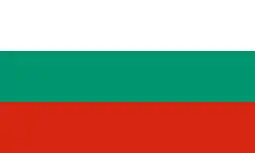 Dimitar Iliev
Dimitar Iliev Bozhidar Kraev
Bozhidar Kraev Josip Brekalo
Josip Brekalo Andrej Kramarić
Andrej Kramarić Dejan Lovren
Dejan Lovren Bruno Petković
Bruno Petković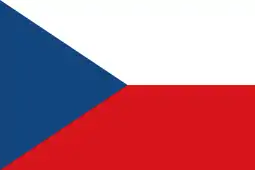 Vladimír Coufal
Vladimír Coufal Vladimír Darida
Vladimír Darida Bořek Dočkal
Bořek Dočkal Michael Krmenčík
Michael Krmenčík Zdeněk Ondrášek
Zdeněk Ondrášek Jakub Pešek
Jakub Pešek Tomáš Souček
Tomáš Souček Matěj Vydra
Matěj Vydra Robert Skov
Robert Skov Jonas Wind
Jonas Wind Marcus Rashford
Marcus Rashford Declan Rice
Declan Rice Raheem Sterling
Raheem Sterling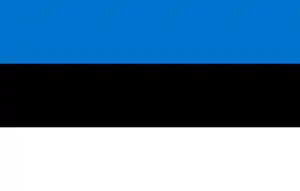 Frank Liivak
Frank Liivak Odmar Færø
Odmar Færø Brandur Hendriksson
Brandur Hendriksson Ári Jónsson
Ári Jónsson Andreas Olsen
Andreas Olsen Gunnar Vatnhamar
Gunnar Vatnhamar Robin Lod
Robin Lod Robert Taylor
Robert Taylor Kingsley Coman
Kingsley Coman N'Golo Kanté
N'Golo Kanté Benjamin Pavard
Benjamin Pavard Dayot Upamecano
Dayot Upamecano Khvicha Kvaratskhelia
Khvicha Kvaratskhelia Valeri Qazaishvili
Valeri Qazaishvili Matthias Ginter
Matthias Ginter Serge Gnabry
Serge Gnabry Leon Goretzka
Leon Goretzka İlkay Gündoğan
İlkay Gündoğan Kai Havertz
Kai Havertz Leroy Sané
Leroy Sané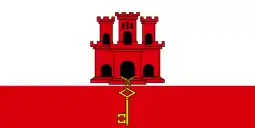 Tjay De Barr
Tjay De Barr Graeme Torrilla
Graeme Torrilla Kostas Fortounis
Kostas Fortounis Dimitris Limnios
Dimitris Limnios Petros Mantalos
Petros Mantalos Dimitris Siovas
Dimitris Siovas Zsolt Kalmár
Zsolt Kalmár Norbert Könyves
Norbert Könyves Nemanja Nikolić
Nemanja Nikolić Roland Sallai
Roland Sallai Dávid Sigér
Dávid Sigér Dominik Szoboszlai
Dominik Szoboszlai Kevin Varga
Kevin Varga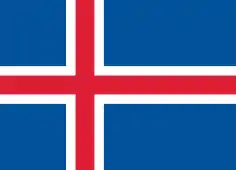 Hólmbert Friðjónsson
Hólmbert Friðjónsson Viðar Örn Kjartansson
Viðar Örn Kjartansson Birkir Már Sævarsson
Birkir Már Sævarsson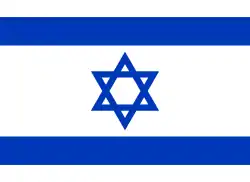 Ilay Elmkies
Ilay Elmkies Manor Solomon
Manor Solomon Nicolò Barella
Nicolò Barella Andrea Belotti
Andrea Belotti Jorginho
Jorginho Lorenzo Pellegrini
Lorenzo Pellegrini Stefano Sensi
Stefano Sensi Aybol Abiken
Aybol Abiken Islambek Kuat
Islambek Kuat Baktiyar Zaynutdinov
Baktiyar Zaynutdinov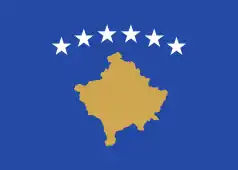 Bernard Berisha
Bernard Berisha Lirim Kastrati
Lirim Kastrati Benjamin Kololli
Benjamin Kololli Vedat Muriqi
Vedat Muriqi Antonijs Černomordijs
Antonijs Černomordijs Vladislavs Gutkovskis
Vladislavs Gutkovskis Vladimirs Kamešs
Vladimirs Kamešs Raimonds Krollis
Raimonds Krollis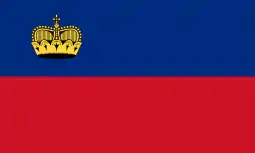 Noah Frick
Noah Frick Yanik Frick
Yanik Frick Nicolas Hasler
Nicolas Hasler Donatas Kazlauskas
Donatas Kazlauskas Karolis Laukžemis
Karolis Laukžemis Modestas Vorobjovas
Modestas Vorobjovas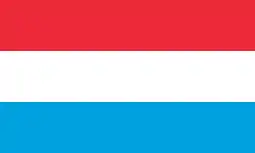 Edvin Muratović
Edvin Muratović Gerson Rodrigues
Gerson Rodrigues Andrei Agius
Andrei Agius Steve Borg
Steve Borg Shaun Dimech
Shaun Dimech Matthew Guillaumier
Matthew Guillaumier Kyrian Nwoko
Kyrian Nwoko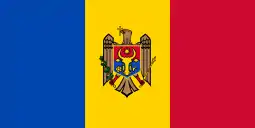 Ion Nicolaescu
Ion Nicolaescu Fatos Bećiraj
Fatos Bećiraj Stefan Mugoša
Stefan Mugoša Donny van de Beek
Donny van de Beek Steven Bergwijn
Steven Bergwijn Ilija Nestorovski
Ilija Nestorovski Goran Pandev
Goran Pandev Stefan Ristovski
Stefan Ristovski Vlatko Stojanovski
Vlatko Stojanovski Ivan Trichkovski
Ivan Trichkovski Gjoko Zajkov
Gjoko Zajkov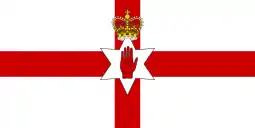 Liam Boyce
Liam Boyce Josh Magennis
Josh Magennis Paddy McNair
Paddy McNair Gavin Whyte
Gavin Whyte Mohamed Elyounoussi
Mohamed Elyounoussi Ghayas Zahid
Ghayas Zahid Kamil Glik
Kamil Glik Kamil Grosicki
Kamil Grosicki Kamil Jóźwiak
Kamil Jóźwiak Karol Linetty
Karol Linetty João Cancelo
João Cancelo André Silva
André Silva Bernardo Silva
Bernardo Silva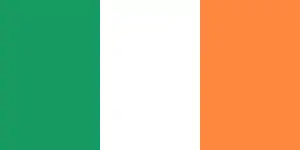 Shane Duffy
Shane Duffy Denis Alibec
Denis Alibec Eric Bicfalvi
Eric Bicfalvi Dragoș Grigore
Dragoș Grigore Alexandru Maxim
Alexandru Maxim George Pușcaș
George Pușcaș Denis Cheryshev
Denis Cheryshev Mário Fernandes
Mário Fernandes Vyacheslav Karavayev
Vyacheslav Karavayev Daler Kuzyayev
Daler Kuzyayev Magomed Ozdoyev
Magomed Ozdoyev Ryan Fraser
Ryan Fraser Sergej Milinković-Savić
Sergej Milinković-Savić Filip Mladenović
Filip Mladenović Dušan Vlahović
Dušan Vlahović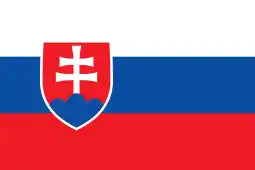 Michal Ďuriš
Michal Ďuriš Ján Greguš
Ján Greguš Marek Hamšík
Marek Hamšík Róbert Mak
Róbert Mak Ivan Schranz
Ivan Schranz Damjan Bohar
Damjan Bohar Josip Iličić
Josip Iličić Jasmin Kurtić
Jasmin Kurtić Sandi Lovrić
Sandi Lovrić Ansu Fati
Ansu Fati José Gayà
José Gayà Gerard
Gerard Álvaro Morata
Álvaro Morata Rodri
Rodri Marcus Berg
Marcus Berg Viktor Claesson
Viktor Claesson Marcus Danielson
Marcus Danielson Dejan Kulusevski
Dejan Kulusevski Robin Quaison
Robin Quaison Haris Seferović
Haris Seferović Silvan Widmer
Silvan Widmer Hakan Çalhanoğlu
Hakan Çalhanoğlu Cenk Tosun
Cenk Tosun Ozan Tufan
Ozan Tufan Cengiz Ünder
Cengiz Ünder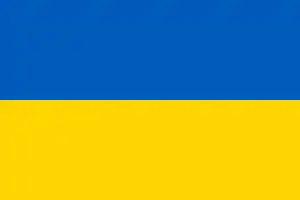 Ruslan Malinovskyi
Ruslan Malinovskyi Viktor Tsyhankov
Viktor Tsyhankov Roman Yaremchuk
Roman Yaremchuk Andriy Yarmolenko
Andriy Yarmolenko Oleksandr Zinchenko
Oleksandr Zinchenko.svg.png.webp) David Brooks
David Brooks.svg.png.webp) Daniel James
Daniel James.svg.png.webp) Jonny Williams
Jonny Williams.svg.png.webp) Neco Williams
Neco Williams.svg.png.webp) Harry Wilson
Harry Wilson
1 own goal
 Emili García (against Malta)
Emili García (against Malta) Anton Krivotsyuk (against Luxembourg)
Anton Krivotsyuk (against Luxembourg).svg.png.webp) Nacer Chadli (against Denmark)
Nacer Chadli (against Denmark) Dominik Livaković (against France)
Dominik Livaković (against France) Ioannis Kousoulos (against Luxembourg)
Ioannis Kousoulos (against Luxembourg) Märten Kuusk (against North Macedonia)
Märten Kuusk (against North Macedonia) Rúnar Már Sigurjónsson (against Denmark)
Rúnar Már Sigurjónsson (against Denmark) Joel Abu Hanna (against Czech Republic)
Joel Abu Hanna (against Czech Republic) Noah Frommelt (against Gibraltar)
Noah Frommelt (against Gibraltar) Matthew Guillaumier (against Latvia)
Matthew Guillaumier (against Latvia) Stuart Dallas (against Norway)
Stuart Dallas (against Norway) Marcus Danielson (against Croatia)
Marcus Danielson (against Croatia)
Overall ranking
The results of each team are used to calculate the overall ranking of the competition.[34]
| League A | League B | ||||||||||||||||||||||||||||||||||||||||||||||||||||||||||||||||||||||||||||||||||||||||||||||||||||||||||||||||||||||||||||||||||||||||||||||||||||||||||||||||
|---|---|---|---|---|---|---|---|---|---|---|---|---|---|---|---|---|---|---|---|---|---|---|---|---|---|---|---|---|---|---|---|---|---|---|---|---|---|---|---|---|---|---|---|---|---|---|---|---|---|---|---|---|---|---|---|---|---|---|---|---|---|---|---|---|---|---|---|---|---|---|---|---|---|---|---|---|---|---|---|---|---|---|---|---|---|---|---|---|---|---|---|---|---|---|---|---|---|---|---|---|---|---|---|---|---|---|---|---|---|---|---|---|---|---|---|---|---|---|---|---|---|---|---|---|---|---|---|---|---|---|---|---|---|---|---|---|---|---|---|---|---|---|---|---|---|---|---|---|---|---|---|---|---|---|---|---|---|---|---|---|---|
Updated to match(es) played on 18 November 2020. Source: UEFA |
Source: UEFA | ||||||||||||||||||||||||||||||||||||||||||||||||||||||||||||||||||||||||||||||||||||||||||||||||||||||||||||||||||||||||||||||||||||||||||||||||||||||||||||||||
| League C | League D | ||||||||||||||||||||||||||||||||||||||||||||||||||||||||||||||||||||||||||||||||||||||||||||||||||||||||||||||||||||||||||||||||||||||||||||||||||||||||||||||||
Source: UEFA |
Source: UEFA |
2022 World Cup qualification play-offs
The best two Nations League group winners based on the overall ranking that finished outside the top two of their World Cup qualifying group will join the ten group runners-up in the World Cup qualification second round (play-offs).[29]
| UNL | Group winner | Rank |
|---|---|---|
| A | 1–4 | |
| B | 17 | |
| 18 | ||
| 19 | ||
| 20 | ||
| C | 33 | |
| 34 | ||
| 35 | ||
| 36 | ||
| D | 49 | |
| 50 |
References
- "UEFA Nations League receives associations' green light". UEFA. 27 March 2014.
- "Regulations of the UEFA Nations League, 2020/21" (PDF). UEFA.com. Union of European Football Associations. 13 October 2019. Archived from the original on 16 November 2020. Retrieved 13 October 2019.
- "Portugal 0–1 France: N'Golo Kante winner sends Blues into finals". BBC Sport. 14 November 2020. Retrieved 17 November 2020.
- "Format change for 2020/21 UEFA Nations League". UEFA.com. Union of European Football Associations. 24 September 2019. Retrieved 24 September 2019.
- "UEFA Nations League: all you need to know". UEFA.com. Union of European Football Associations. 3 March 2020. Retrieved 17 June 2020.
- "What is the UEFA Nations League?". UEFA.com. Union of European Football Associations. 24 September 2019. Retrieved 24 September 2019.
- "VAR to be introduced in 2019/20 UEFA Champions League". UEFA.com. Union of European Football Associations. 27 September 2018. Retrieved 27 September 2018.
- "UEFA Executive Committee agenda for Nyon meeting". UEFA.com. Union of European Football Associations. 27 November 2019. Retrieved 28 November 2019.
- "UEFA Nations League format and schedule approved". UEFA.com. 4 December 2014.
- "2020/21 UEFA Nations League: All you need to know". UEFA.com. Union of European Football Associations. 3 March 2020. Retrieved 17 June 2020.
- "UEFA Executive Committee approves new principles for upcoming national team matches". UEFA.com. 31 August 2020.
- "Two triple-headers approved for 2021 March and September national team windows". UEFA. 24 September 2020. Retrieved 24 September 2020.
- "UEFA meets general secretaries of member associations". UEFA.com. Union of European Football Associations. 19 August 2020. Retrieved 1 September 2020.
- "UEFA Super Cup to test partial return of spectators". UEFA.com. Union of European Football Associations. 25 August 2020. Retrieved 1 September 2020.
- "UEFA allows return of fans at maximum 30% of capacity pending approval of local authorities". UEFA.com. Union of European Football Associations. 1 October 2020. Retrieved 2 October 2020.
- "How the 2020/21 UEFA Nations League will line up". UEFA.com. Union of European Football Associations. 24 September 2019. Retrieved 24 September 2019.
- "Resolution of the European football family on a coordinated response to the impact of the COVID-19 on competitions". UEFA.com. Union of European Football Associations. 17 March 2020. Retrieved 17 March 2020.
- "European Qualifiers: FIFA World Cup – Qualifying draw procedure" (PDF). UEFA.com. Union of European Football Associations. 18 June 2020. Retrieved 18 June 2020.
- "UEFA Executive Committee agenda for June meeting". UEFA.com. Union of European Football Associations. 11 June 2020. Retrieved 11 June 2020.
- "Nations League group stage in September, October and November". UEFA.com. Union of European Football Associations. 17 June 2020. Retrieved 17 June 2020.
- "UEFA competitions to resume in August". UEFA.com. Union of European Football Associations. 17 June 2020. Retrieved 17 June 2020.
- "FIFA Council unanimously approves COVID-19 Relief Plan". FIFA. 25 June 2020. Retrieved 25 June 2020.
- "2020–21 UEFA Nations League fixture list" (PDF). UEFA.com. Union of European Football Associations. 3 March 2020. Retrieved 3 March 2020.
- "Nations League group stage in September, October and November". UEFA.com. 26 June 2020. Retrieved 27 June 2020.
- "2020/21 Nations League: All the confirmed fixtures". UEFA.com. 26 June 2020. Retrieved 27 June 2020.
- "UEFA Nations League 2020/21 overall ranking" (PDF). UEFA.com. Union of European Football Associations. 24 September 2019. Retrieved 24 September 2019.
- "2020/21 UEFA Nations League – league phase draw procedure" (PDF). UEFA.com. Union of European Football Associations. 4 December 2019. Retrieved 4 December 2019.
- "League Phase Draw". UEFA.com. Union of European Football Associations. Retrieved 27 February 2020.
- "Game changer: group stage for UEFA Women's Champions League". UEFA.com. Union of European Football Associations. 4 December 2019. Retrieved 4 December 2019.
- "2020/21 UEFA Nations League: League Phase draw". UEFA.com. Union of European Football Associations. 9 December 2019. Retrieved 13 December 2019.
- "44th Ordinary UEFA Congress in Amsterdam". UEFA.com. Union of European Football Associations. 4 February 2020. Retrieved 4 February 2020.
- "Tirana to host first UEFA Europa Conference League Final". UEFA. 3 December 2020. Retrieved 3 December 2020.
- "UEFA Nations League finals draw". UEFA. 27 November 2020. Retrieved 27 November 2020.
- "Overall ranking of the 2020/21 UEFA Nations League" (PDF). UEFA. 1 December 2020. Retrieved 1 December 2020.